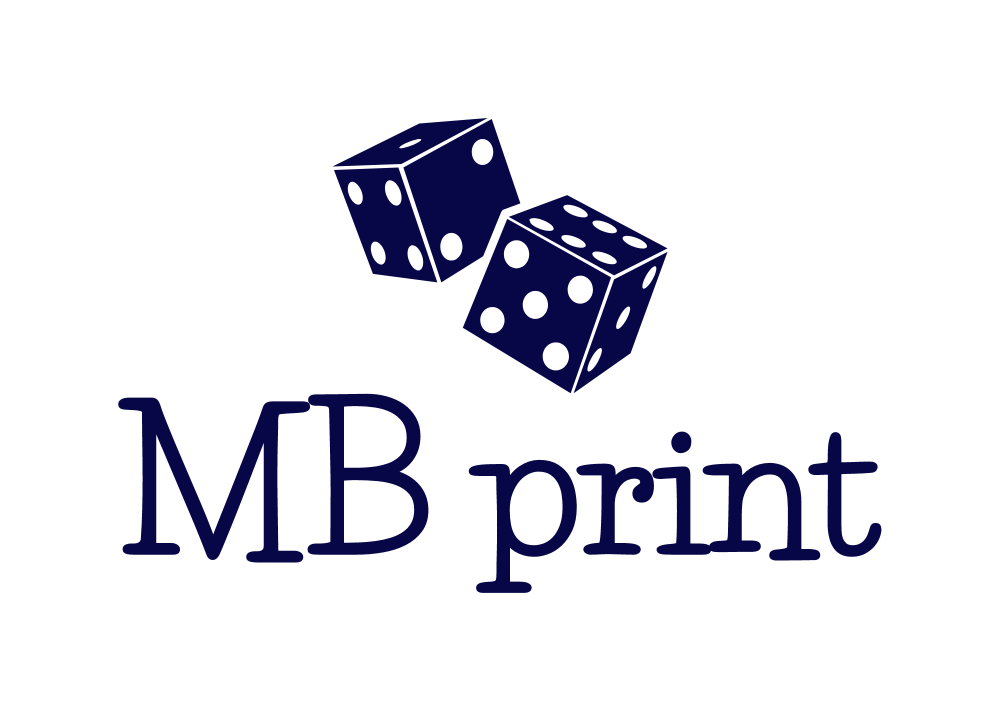At MB print we make every effort to provide you with a high quality product. As a company specializing in low-volume printing, a significant part of the work on orders, for technological reasons, is done manually. The way you prepare your files has therefore a significant impact on what the game we make will look like. Below we present a few guidelines on how to professionally prepare a file for printing.
Tokens and other small cardboard elements are made using 1.5 mm thick cardboard covered with printed paper sheets on both sides. Additionally, these elements are foiled, i.e. covered with a thin layer of matt foil. Thanks to this, these elements gain greater resistance to moisture, abrasion, stiffness and are thicker. In addition, graphics on cardboard elements are not rubbed off even during long and intensive use.
Cardboard elements are cut out with a laser, thanks to which there are no limitations on the shape of the tokens.
Prepare cutting lines in vector form, so use programs such as: Corel Draw ( commercial, demo 14 days available), Adobe Illustrator (commercial), Inkspace (free).
To prepare sheets with tokens use the templates below
You can send us a working file from Corel Draw. If only minor corrections are needed, we can make them ourselves. In this case remember to save the file in version 19 (2017) or older. If you are using another program, send us 2 files, which are described below.
How to prepare a large sheet:
- Apply a cutting line.
Design the layout of the tokens on the sample sheet.
An example of what this looks like for a large sheet:
Place the token shapes on the chosen template. Place the cut lines in the ” Cutting LINE” layer. Do not remove any marks on the sample sheet in the white field.
Remember to keep a minimum distance of 4 mm between each element.
After you have placed all the tokens, “group” them into one object and center them on the sheet (“P key” shortcut). Now copy the whole group of tokens to the other side (to the Cutting Layer) and then mirror it horizontally.
Export the first page to a file with the .dxf extension.
2. Front side of the sheet with the token graphics.
On the sheet you have created, as in point 1, place your images and graphics. Use a separate layer of “Graphics” for this.
Remember that each element to be cut out must have a 2 mm printing bleed and a safe area inside the cut out element.
For example:
The black line is our cutting line. It is the intended edge of the token. It shows what shape and size the token will have. The graphic area outside this line is the printing bleed area. Remember not to add a white frame as a “bleed” of the design. The bleed must be part of the design. If the entire bleed area is white, an unsightly white strip at the edges may appear on the printout. The white bleed is only correct if the token background is completely white. Furthermore, you should not place important items close to the cutting line as everything near the cutting line can be cut off during production. Extend the edge/background color to the outer edge of the slope. You can read more about the printing bleed HERE.
After placing all “HIDE” and “OFF PRINTING AND EXPORTING” graphics of the “CUTTING LINE” layer. For our example, it looks like this:
3. The reverse side of the sheet with the token graphics
After going to the other side, insert graphics of the reverse of your tokens. Remember that the graphics of the first side lying on the left corresponds to the graphics of the second side lying on the right.
If you need one-sided elements – leave the “reverse” side clean or fill it with the chosen color. We will apply this color to the reverse of the tokens.
After placing all the “HIDE” and “OFF PRINTING AND EXPORTING” graphics of the “CUTTING LAYER” layer and export the file with the token graphics to a pdf file.
For our example, it looks like this:
How to prepare a small sheet:
The small sheet differs from the big one in that the front and back sides are side by side, on one screen.
The other rules for preparing the sheet with the tokens remain the same as for the big sheet.
Below are sample screens from the program.
To easily get a mirror image in the right place, follow these steps:
- Arrange the cut lines for page 1;
- Mark all elements of the cut line AND the vertical line on a grey background between the pages;
- copy the selected elements (Ctrl + C);
- paste the copied elements (CTRL + V);
- Mirror the vertical line of the selected elements.
For better understanding, the files used as an example above are listed in the table:
FINALLY, REMEMBER THAT:
These elements are cut out by laser, and such cutting technology is associated with several things. First, the edges may have a small amount of soot. One of the sides may have dirt from the soot. To get rid of it, wipe the surface and the edges with a slightly damp cloth. The tokens are covered with a layer of lamination foil, which protects against water. After wiping the edges, leave them to dry. Secondly, after opening the package you can smell the smoke. This is natural, because the elements are laser fired. This smell disappears by itself after about a week from opening. Wiping the edges also helps, as mentioned above.


 Polski
Polski